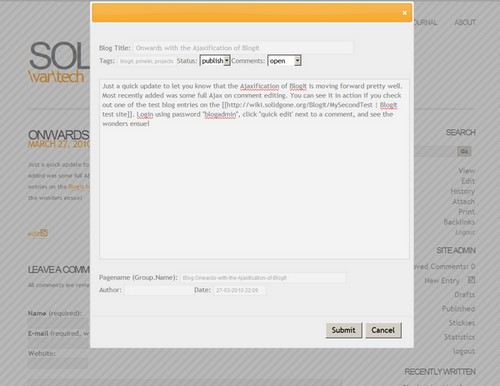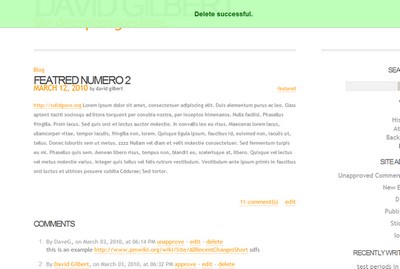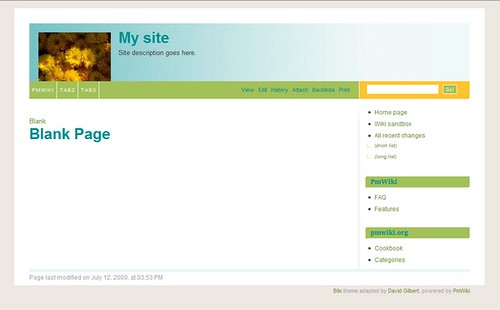BlogIt migration from Subversion to Git
The full history of BlogIt source code is now available on GitHub. You can find and download the current release, all prior releases, and also the most recent ‘stable’ development release. Here’s a quick run down for those not familiar with GitHub:
- Production and Development Releases: Use the Branch pull-down to select which code base to view. You’ll always see the most recent production version when you first visit the page.
- Past Versions: Each version of BlogIt is identified by a tag. Use the tag pull-down to select a specific version.
- Download: After selecting a branch/version use cunningly the hidden “Download Source” link near the top right, to download a zip or tarball.


